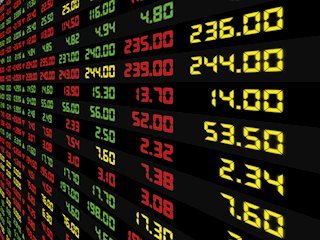Small investors to benefit from SEC rule changes
|
In a significant move aimed at leveling the playing field for small investors, the Securities and Exchange Commission (SEC) recently voted to implement the most sweeping changes to U.S. stock market rules since the mid-2000s. These new regulations target two primary areas: tick size reduction and access fee cap reduction.
The SEC's actions signal a commitment to promoting fairness and transparency in the markets, ultimately benefiting individual investors through increased competition for their orders. This is anticipated to lead to lower trading costs and the best possible prices. Furthermore, these changes aim to create a more balanced competitive landscape between traditional exchanges and the less regulated "dark pools" that have proliferated with the rise of electronic trading.
The impact of these new rules on traders and exchanges is likely to be significant and will be closely watched until the rule change comes into effect in November 2025. Let’s take a closer look.
What has the SEC approved?
Tick size reduction
The SEC has implemented a two-tiered system for the minimum price increment, or "tick size," at which stocks can be quoted. While some stocks will retain the traditional 1-cent tick, thousands of others – those with bid-ask spreads frequently hovering around 1 cent – will see their minimum price increment halved to $0.005 or sub-penny increments.This is projected to impact an estimated 1,788 stocks based on how they were traded last year, according to the SEC.
A tick represents the basic unit of measurement for price movements in the market (upward or downward). It serves as a standardized way to track and compare price changes across different stocks or price differences for the same stocks on different exchanges. Because they allow for potentially more precise pricing and better market efficiency, ticks also enable traders to optimize their trading.
Evolution of tick sizes in the US
For a significant part of the 19th and 20th centuries, U.S. stocks were quoted in fractions of a dollar. It was therefore common to see prices in increments of one-eighth of a dollar (12.5 cents).
In 1997, major exchanges like the NYSE and Nasdaq transitioned to increments of one-sixteenth of a dollar (6.25 cents),often referred to as "teenies" by traders.
A major shift happened in 2001 when the SEC mandated that all stock markets switch to decimal pricing through what was called "decimalization." This meant prices were now quoted in dollars and cents, making them easier to understand and compare. Since then, the standard tick size when trading stocks above $1 has been one cent.
What could this change bring?
Smaller tick sizes translate to narrower bid-ask spreads (the difference between buying and selling prices), directly reducing trading costs for investors. Tighter spreads mean less money is spent when buying or selling stocks, effectively boosting investor returns, especially for those making smaller trades.
Access fee cap reduction
The SEC is taking a hard look at the "maker-taker" fee structure prevalent in U.S. stock markets. In this model, exchanges incentivize market participants to provide liquidity (i.e., "make" the market) by offering them rebates, while those who take liquidity (i.e., execute trades against existing orders) are charged a fee.
Concerns have arisen that this system can be exploited by high-frequency traders, leading to potential market distortions,reduced liquidity, and ultimately, higher costs for long-term investors. The SEC is particularly scrutinizing the practice of exchanges offering sizable rebates, which critics argue can incentivize certain behaviors that are detrimental to overall market health.
To address these concerns, the SEC is slashing transaction fees. The maximum fee exchanges can charge brokers for executing trades has been drastically cut from 30 cents to 10 cents per 100 shares.
What could this change bring?
The reduction in transaction fees directly translates to lower costs for investors, allowing them to keep more of their investment gains. Additionally, by curbing potential abuses of the maker-taker model and aligning access fees with the new tick size structure, the SEC aims to promote a more equitable and transparent market environment. Finally, increased oversight of high-frequency trading practices and the potential adjustments to access fees can help mitigate the risk of market manipulation, fostering greater confidence among investors.
Information on these pages contains forward-looking statements that involve risks and uncertainties. Markets and instruments profiled on this page are for informational purposes only and should not in any way come across as a recommendation to buy or sell in these assets. You should do your own thorough research before making any investment decisions. FXStreet does not in any way guarantee that this information is free from mistakes, errors, or material misstatements. It also does not guarantee that this information is of a timely nature. Investing in Open Markets involves a great deal of risk, including the loss of all or a portion of your investment, as well as emotional distress. All risks, losses and costs associated with investing, including total loss of principal, are your responsibility. The views and opinions expressed in this article are those of the authors and do not necessarily reflect the official policy or position of FXStreet nor its advertisers.